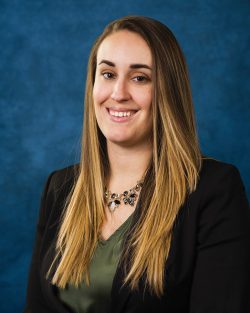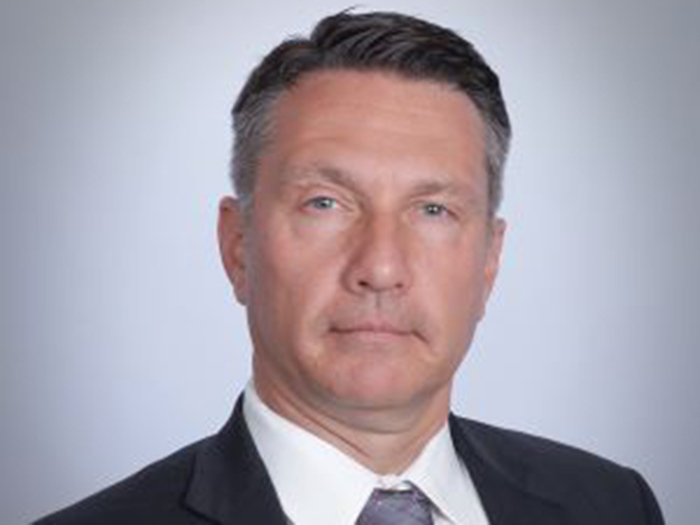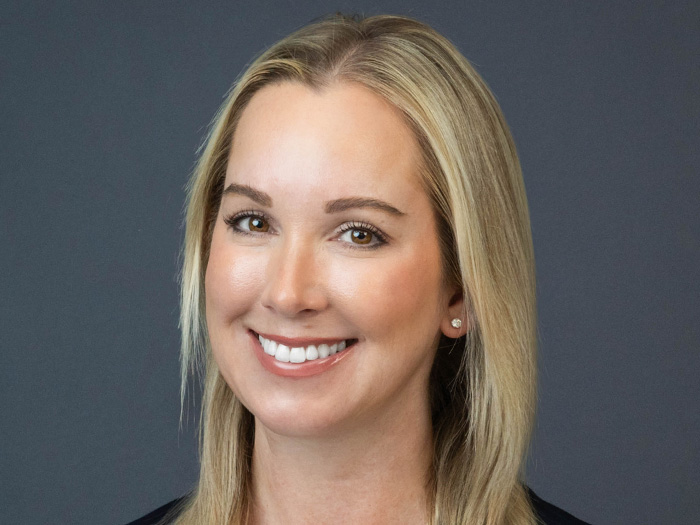How a Former Brandeis University Basketball Player Became a Star Insurance Broker

Kelly Ethier knows the pains, strains and joys of being a high-level college athlete. Though she never suffered a major injury while playing on the women’s varsity basketball team at Brandeis University, she is well aware of the potentially devastating effects of student athletes not having appropriate health insurance coverage.
Depending on her team’s needs at the time, Ethier played every position from point guard to small forward on her college team and was captain for two years.
She’s taken that same can-do spirit into her role as assistant vice president at Gallagher Sports and Special Risk.
“I love being able to provide solutions — whether that’s seeing that a claim is paid or helping a university save money on their premium,” she said.
Ethier’s focus is on blanket accident insurance policies, which includes coverage for intercollegiate athletic departments and club and intramural sports.
For her work, she was recognized as a 2019 Power Broker® by Risk & Insurance® in the education category.
Insuring Students
Athletic accident insurance policies are purchased by college and university clients and are designed to supplement student athletes’ own insurance policies. They cover the gap until the insurance provided by the National Collegiate Athletic Association (NCAA) or other governing athletic association kicks in.
The polices cover out-of-pocket costs for medical treatment stemming from an injury that occurs during university-sponsored athletic events, including practices, training sessions, travel to and from events and other school-sponsored athletic activities.
The services that Gallagher Sports and Special Risk offers to its approximately 200 higher education clients and other stakeholders include account management, claims advocacy, cost containment strategies (repricing and discounting), insurance verification, primary insurance options and custom claim reporting.
Most colleges and universities purchase this type of insurance for one of two reasons.
“As a best practice, they want to make sure their athletes are receiving a high level of care,” said Ethier. “And it can help for compliance purposes.”
Knowing the Clients’ Needs
Ethier’s experience as a former college athlete helps her understand the individual needs of the schools as well as the athletes, parents and other stakeholders.
“I’m able to speak their language,” Ethier said. “I understand their needs and their pain points and how a college athletic department functions.”
Ethier, 29, graduated from Brandeis in 2012 with a degree in sociology. She earned a master’s degree in sports management from Northeastern University in Boston in 2014.
From there, she started in a client service role at Gallagher in 2014, and quickly advanced.
“I was able to learn the business from the ground up,” she said. “Within a year, I moved into account management, where I managed renewals on behalf of 12 higher education clients.”
She was promoted to assistant vice president in January 2019.
“I was cut loose and told to go out and find my own clients,” said Ethier, who today works with 70 higher education clients.
She attributes her success, and Gallagher’s, in attracting clients to its service model.
“A large part of the model is the pride we take in demonstrating we are leading experts in this niche.”
She cites Gallagher’s Quarterly Update Newsletter as an example. It is sent to existing clients and friends of Gallagher and includes relevant news articles about health care or NCAA regulations that could impact a school’s insurance program.
She estimates that the policies Gallagher oversees cover about 100,000 student athletes nationwide. Most of these players participate in intercollegiate or varsity sports. About a quarter of Gallagher Sports and Special Risk’s higher education clients cover club and intramural sports under their policies.
Reviewing Common Collegiate Injuries
Ethier notes that, on average, every college or university has about 500 intercollegiate student-athletes.
With so many athletes competing on fields, courts, gyms and pools throughout the nation, college and university athletic directors expect players to have injuries.
“With this type of insurance, you purchase it knowing you’re going to use it,” Ethier said. “It benefits my clients that I understand the importance of making sure that a claim goes smoothly and that I understand how difficult it is for a college athlete to have an injury.”
Ethier takes client service seriously.
“We’re quarterbacking for all the stakeholders involved,” she said. “I think a lot of being successful in my role comes down to integrity and attentiveness. It is a lot about being responsive to clients’ needs and solving problems.”
While she was never sidelined by a major injury during her college-playing days, she suffered an overuse injury — tendonitis — and said many other college athletes are in the same boat.
“We’ve seen an uptick in overuse injuries,” she said. “I think the popularity of youth sports leagues and the level of competition is driving up these injuries.”
While most college athletic policies have a two-year benefit period following the date of injury, Ethier said schools may want to consider extending the period to three- or even five-years. One reason relates to traumatic brain injuries or concussions. These usually don’t bring big-dollar medical bills initially, but athletes may continue to experience problems years later.
“If schools notice a trend of athletes coming back and saying, ‘Hey, I was injured while playing for you and I’m still having issues,’ I’d encourage them to talk to insurers about extending the benefits period,” she said.
No Pain, All Gain
As schools continue to pay attention to reducing their premiums, Ethier said she works with claims companies that focus on discounting. She also strives to balance the needs of all stakeholders.
“The biggest challenge is doing right by the client while also going out and getting them the best options and protecting our carriers as well,” she said.
Insurance wasn’t on her mind when she was dribbling a basketball down the court, but she’s glad it is now: “I never expected I’d love this niche industry as much as I do,” she said. &











